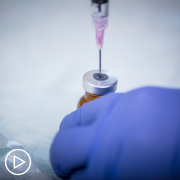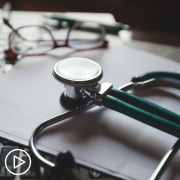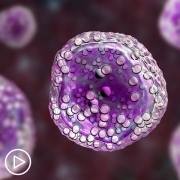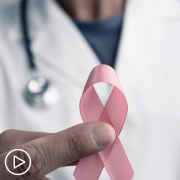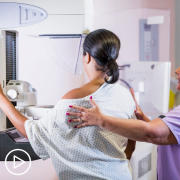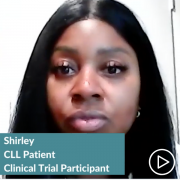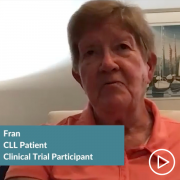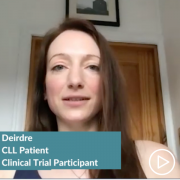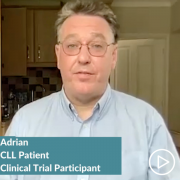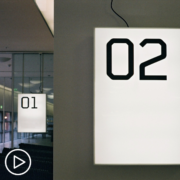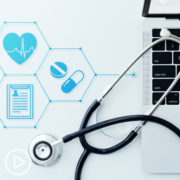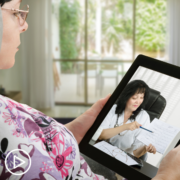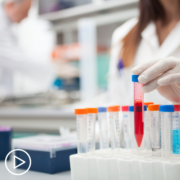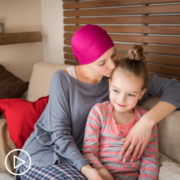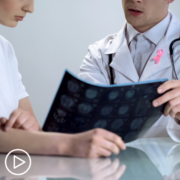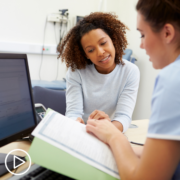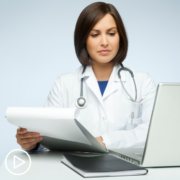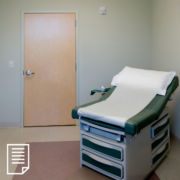Lung Cancer Patient Shares Top Tips for Utilizing Telemedicine
Lung Cancer Patient Shares Top Tips for Utilizing Telemedicine from Patient Empowerment Network on Vimeo.
Stage IV lung cancer survivor and nurse Gina has taken advantage of telemedicine opportunities in her care. Watch as she shares her perspective about the benefits of telemedicine and her hopes for the future. In Gina’s words, “..no matter where they are in the world, I don’t think that where you live should determine if you live, I think everyone should have access to the very best care…”
See More From Lung Cancer TelemEDucation
Related Programs:
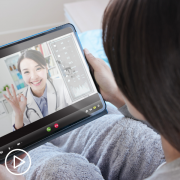
|

|
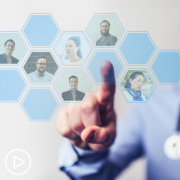
Lung Cancer Patient Shares Why Telemedicine Should Be a Long-Term Tool
|
Transcript:
Gina:
When it comes to telemedicine, I think that we have to think of it as an adjunct to care, so it wouldn’t replace your actual care with your doctor, and so I think that utilizing telemedicine would really just be kind of like getting a second opinion, getting somebody else to look at your case, and it would have been an opportunity really for you and your community doctor to work with an expert in the field, wherever, whatever disease state you’re being treated it with, and I think that’s one of the silver linings of COVID that we can use, so it wouldn’t necessarily be that telemedicine is taking over your care, but it’s really just an adjunct to your care. So, you would still be touched by your doctor, you still would be assessed by your community doctor, but that community doctor would be leaning on the expertise of the doctor in which you’re getting a second opinion or you’re consulting with…so I think that’s the way that we have to think of telemedicine and diversifying and really making sure that everybody has access to the best care, it’s not really in placement of your normal care, but just an adjunct, so in addition to your care.
One thing that I really hope that we can benefit from is…I hope that we can really learn from COVID. We learned that really there is a disease that is not defined by borders, and so I hope that we can use the opportunities and the things the way that we were, so I guess we persevered in spite of a disease, I hope we can use that for clinical trials to and so what I mean by that is I feel like the silver lining of COVID was telemedicine, and we were able to provide telemedicine to patients no matter where they were, no matter how they felt, they were able to have the best of the best care right in the comfort of their own home. And so one of the things that I actually personally benefited from was because of COVID, telemedicine was open up everywhere, and so I was able to actually get care from some of the best ALK cancer experts in Boston through telemedicine, and so I wasn’t actually required to travel to Boston instead, I could meet with that doctor by Zoom, and sadly, once the COVID mandates were lifted, that hospital was no longer providing telemedicine, so I was getting this great care, this expert advice in my disease process, and all of a sudden it was stopped, and so I hope that one of the things that we can do is figure out ways to utilize telemedicine to really bring the best care to patients no matter where they are in the United States or really…no matter where they are in the world, I don’t think that where you live should determine if you live, I think everyone should have access to the very best care, and I think it can be delivered through telemedicine.



